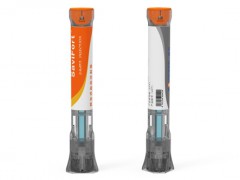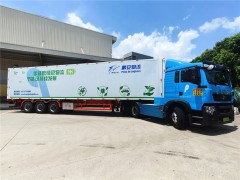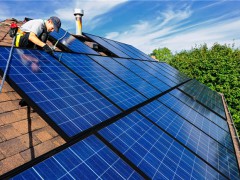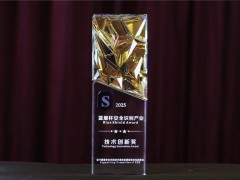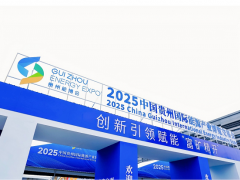據今日石油網2022年7月24日報道,由于圭亞那繼續快速開發其油氣資源,圭亞那政府希望建立一個框架, 以支持這個新興產油國的經濟轉型。在此背景下,圭亞那總統日前宣布了一個圭亞那近9年的轉型計劃——《2030年愿景》。
在7月22日下午在國家體育場舉行的2022年圭亞那國際建筑博覽會開幕式上,他在主題發言中提到了《2030年愿景》的基本原則,并概述了這些基礎設施、人力、技術和社會轉型;經濟多樣化; 國際定位; 公平的繁榮發展;環境責任; 可持續發展; 服務重定向和安全性。
他在開幕式上對800多名與會者說:“這是一項需要我們每一個人承擔的任務; 一個需要每一個利益相關者承擔的任務。這是一項不能失敗的任務,這是一項唯一的結果就是成功的任務。”
他指出,圭亞那政府正在建設的基礎設施發展計劃的關鍵是確保圭亞那的人力資本相互關聯。
“這是非常關鍵的,”他說,“對農業、糧食生產、建筑和建設、旅游、接待和其他服務至關重要……你聽到我們談論的道路和橋梁、新建筑……它們都與圭亞那人民生活的改善有關。這種轉型與擴大經濟機會有關,與改善民生有關,與人類社會的進步有關。”
作為圭亞那正在進行的經濟轉型的一部分,他提醒圭亞那不會僅僅依靠石油和天然氣部門的收入來建設國家。事實上,他重申了國家的立場,即利用巨額收入來促進傳統和新興行業的多樣化和發展。
他重申:“經濟多樣化是將來自石油和天然氣的收入催化到我們經濟的所有部門,使它們成為具有競爭力、彈性和可持續的支柱,使經濟立足于此,并在此基礎上提供可持續、薪水優厚和先進的就業崗位。”
他表示,投資和各種新技術也將在這一轉型中發揮不可或缺的作用。他指出,隨著技術的發展,特別是在農業領域的技術發展,圭亞那有望建立拉丁美洲和加勒比地區最大的水栽培農場。水栽培法是一種無土栽培植物的方法。一年四季都可以水栽培。水栽培比傳統的土壤栽培系統用水量更少。 與傳統的土壤種植系統相比,它可以更快地生長、獲得更高的產量。
重要的是,《2030年愿景》與圭亞那新的和擴大的《2030年低碳發展戰略》(LCDS 2030)齊頭并進。這個戰略是圭亞那的環境發展藍圖,幾天前已被提交到國會審批。
李峻 編譯自 今日石油網
原文如下:
Major transformational plan unveiled in country with world’s 17th largest oil reserves
As Guyana continues to expeditiously develop its hydrocarbon resources, the government wants to ensure that it builds a framework that supports economic transformation taking place in the new oil producing country. Against this backdrop, President Dr. Mohamed Irfaan Ali has announced an almost nine-year transformational plan for Guyana – Vision 2030.
In his keynote address at the opening of Guyana’s International Building Expo 2022, held at the National Stadium on Friday afternoon, President Ali referred to the fundamental tenets of Vision 2030, and outlined these as infrastructural, human, technological and social transformation; economic diversification; international positioning; equitable prosperous development; environmental responsibilities; sustainable advancement; service reorientation and security.
This development mix, the President said, will be supported by people, partnerships, morals/ethics, capital, research and development, trust, cultural heritage, best practices, institutions, governance and a safety net.
“This is a mission that requires every single one of us; a mission that requires every single stakeholder. This is a mission that must not fail, this is a mission whose only outcome shall be a success,” the Head of State said to the crowd of over 800 participants.
Key to the infrastructural development plan that the government is building is ensuring that the country’s human capital is linked, the President noted.
“This is very critical,” he said. “Critical to agriculture, food production, building and construction, tourism and hospitality and other services… The roads and the bridges that you hear us talk about, the new buildings… they are all linked to the upliftment of human lives here in Guyana. The transformation is linked to expanded economic opportunities, it is linked to the improvement of livelihood, it is linked to the advancement of society with a human aspect.”
As part of the economic transformation that Guyana is pursuing, the Head of State reminded that Guyana will not rely solely on the revenues earned from the oil and gas sector to build the country. In fact, he reaffirmed the nation’s position of using the massive revenues to diversify and boost the traditional and newer sectors.
“The economic diversification is about catalysing the revenues from oil and gas to all of the sectors of our economy, making them competitive, resilient and sustainable pillars on which the economy will stand, and on which the economy will deliver the types of jobs that are sustainable, good-paying and advanced in our time,” President Ali iterated.
Investing in and embracing technology will also play an integral role in this advancement, the President said. With technology, he indicated, particularly in the agriculture sector, Guyana positions itself to build the largest hydroponics farm in Latin America and the Caribbean. Hydroponics is a method of growing plants without soil. You can grow hydroponically all year long. Hydroponic growing uses less water than traditional soil-based systems. It allows for faster growth and higher yields than traditional soil-based growing systems.
importantly, Vision 2030 goes hand-in-hand with Guyana’s new and expanded Low Carbon Development Strategy (LCDS 2030). This strategy, which is an environmental development blueprint for the country, was tabled in the National Assembly just days ago.
免責聲明:本網轉載自其它媒體的文章及圖片,目的在于弘揚石化精神,傳遞更多石化信息,宣傳國家石化產業政策,展示國家石化產業形象,參與國際石化產業輿論競爭,提高國際石化產業話語權,并不代表本網贊同其觀點和對其真實性負責,在此我們謹向原作者和原媒體致以崇高敬意。如果您認為本站文章及圖片侵犯了您的版權,請與我們聯系,我們將第一時間刪除。


